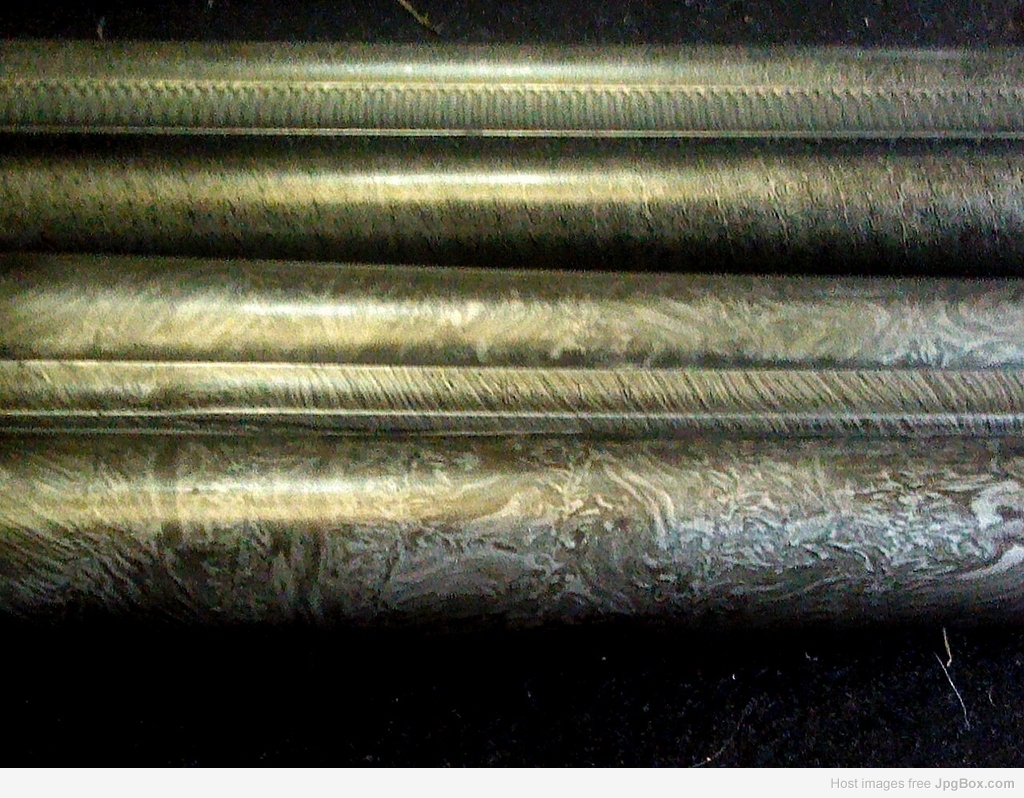I've been an advocate of nitrocellulose lacquer followed by Renaissance for Damascus and Twist tubes. It's traditional, as well as being protective and beautiful. The problem is that solvent based cleaners play hell with the lacquer. When these guns were made Black Powder was in use, with water being the main method to clean them. No problem for lacquer. Since then, nitro powders have become the Standard, as well as plastic hulls. Now, cleaners have solvents in them, and unless you're very careful you can easily remove the lacquer. I suspect this has contributed to the pattern deterioriation of countless Vintage tubes, as simple oiling (due to my observations on my tube samples over time) does not stop deterioration over time, with black tubes turning brown, and a reduction of contrast and pattern clarity. None of this bodes well for working guns.
I started an experiment nearly a year ago and may have found a solution. Here is a picture of a Laminated section from my collection. It was coated with a modern rust inhibitor and left on my table, those of you who have visited me may have seen it. It's a little blacker when seen in person. It has not degraded over time. I applied Renaissance Wax shortly before the shot. There is a Grade Three Parker set next to it with a lacquer and wax coating for comparison. Please excuse the crappy shop picture, but I think you can see my point. The inhibitor/wax combination is probably more functional for a gun getting use.
theinhibitor.com
